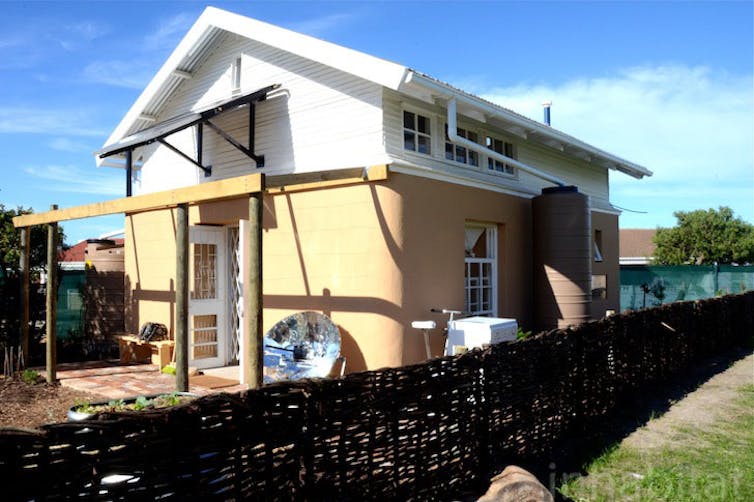How the world needs to change as regions get drier


Dian Spear, University of Cape Town
Water is likely to become scarcer in northern and south west Africa. This is partly due to changes in weather patterns. In addition populations are increasing. Already water supply is becoming a serious concern, especially in drought-prone areas such as northern Namibia.
The University of Cape Town is working with partner organisations in southern, west and east Africa as well as India to investigate how to adapt to climate change in semi-arid regions. In examining various approaches that have already been tried, we identified four types of changes that can be made to adapt to water scarcity. These are:
-
introducing new practices or technologies, such as wastewater reuse;
-
doing more of what we’re already doing, for example installing rainwater tanks at people’s homes.
-
changing the way water is governed, for example integrated watershed management and more consultative and equal water allocation; and
-
changing social values and attitudes.
By combining these interventions, there’s a better chance of managing water sustainably for domestic and agricultural use. They can help increase water supply, improve efficiency and reduce water use.
New practices
Water needs to be secured for use in agriculture and by the residents of towns and cities. As rainfall declines and water demand from growing populations increases, available water is becoming more limited. This is making the introduction of new technology and new practices crucial to adapt to water scarcity.
Desalinising seawater is one technological innovation. The new portable desalinisation plant in Richards Bay, South Africa, which cost USD21 million, can provide 10 million litres of water per day. But this uses a lot of energy.
Another example of innovation is Goreangab water reclamation plant in Windhoek, Namibia which produces 21 million litres of potable water per day from wastewater.
To use scarce water more effectively in agriculture conservation tillage using water harvesting furrows has been introduced to Namibia as have early maturing varieties of millet that are better adapted than staple crops like maize.
Expanding existing practices
To improve availability of water, it is important to scale up the use of practices that reduce demand, increase availability and increase efficient use of water. For example, more water can be made available through capturing, storing and using rainwater. Some homes in Cape Town are now harvesting rainwater from their roofs. Rainwater harvesting has the potential to reduce water demand by over 20% if water is used for multiple uses in the household.
In towns rainwater can also be harvested from storm water drains and in rural areas water can be captured in dams for irrigation and watering animals. Water can also be stored underground. For example, in Bermuda all houses are built with rainwater storage under them.
Better seasonal forecasting and early warning information can also play a huge role in preparing for water scarce times. For example, in India tailored information products like crop calendars and interactive mobile phone apps, incorporating local knowledge, have improved forecasting.
Changing governance
How local authorities and governments manage water – and the factors that have a major impact on water supply – is hugely important.
An example of integrated watershed management is dealing with problems like alien trees. Trees like wattles and eucalyptus that grow in water catchment areas use huge amounts of water. Their removal can increase water available in catchment dams.
Another example is how local authorities enforce water restrictions. Do they do this fairly? Do they penalise excessive users? Incentives also work, like publicly praising water savers and giving people the technology they need. This can include introducing smart water meters as has happened in Cape Town, or providing rainwater tanks to enable people to store rainwater.
Altering attitudes
People are more likely to change their behaviour if they want to change, are able to change and have the opportunity to change. In addition to being penalised or incentivised, behaviour can be changed through being informed about the problem and solutions and being persuaded through media messages and imagery.
At an individual level, a change in attitude towards water use as tourists, home owners, business owners, government and farmers will make a huge difference. Gardeners, for example, can use indigenous drought-tolerant plants such as Carpobrotis edulis, Rhus crenata and Pelargonium cucullatum in Cape Town. People can also save water by having short showers and capturing water from showers and washing machines to use for flushing toilets.
Using role models like sports stars and musicians to promote water conservation can have a massive impact. They could make it socially acceptable to flush toilets less, for example, or to have gardens without lawns.
![]() Some changes are easier to make than others and there are countries which have adapted and made some changes. But dealing with water scarcity is a global challenge and as the climate changes and as populations grow, difficult changes must be made.
Some changes are easier to make than others and there are countries which have adapted and made some changes. But dealing with water scarcity is a global challenge and as the climate changes and as populations grow, difficult changes must be made.
Dian Spear, Southern Africa lead, Adaptation at Scale in Semi-Arid Regions, University of Cape Town
This article was originally published on The Conversation.